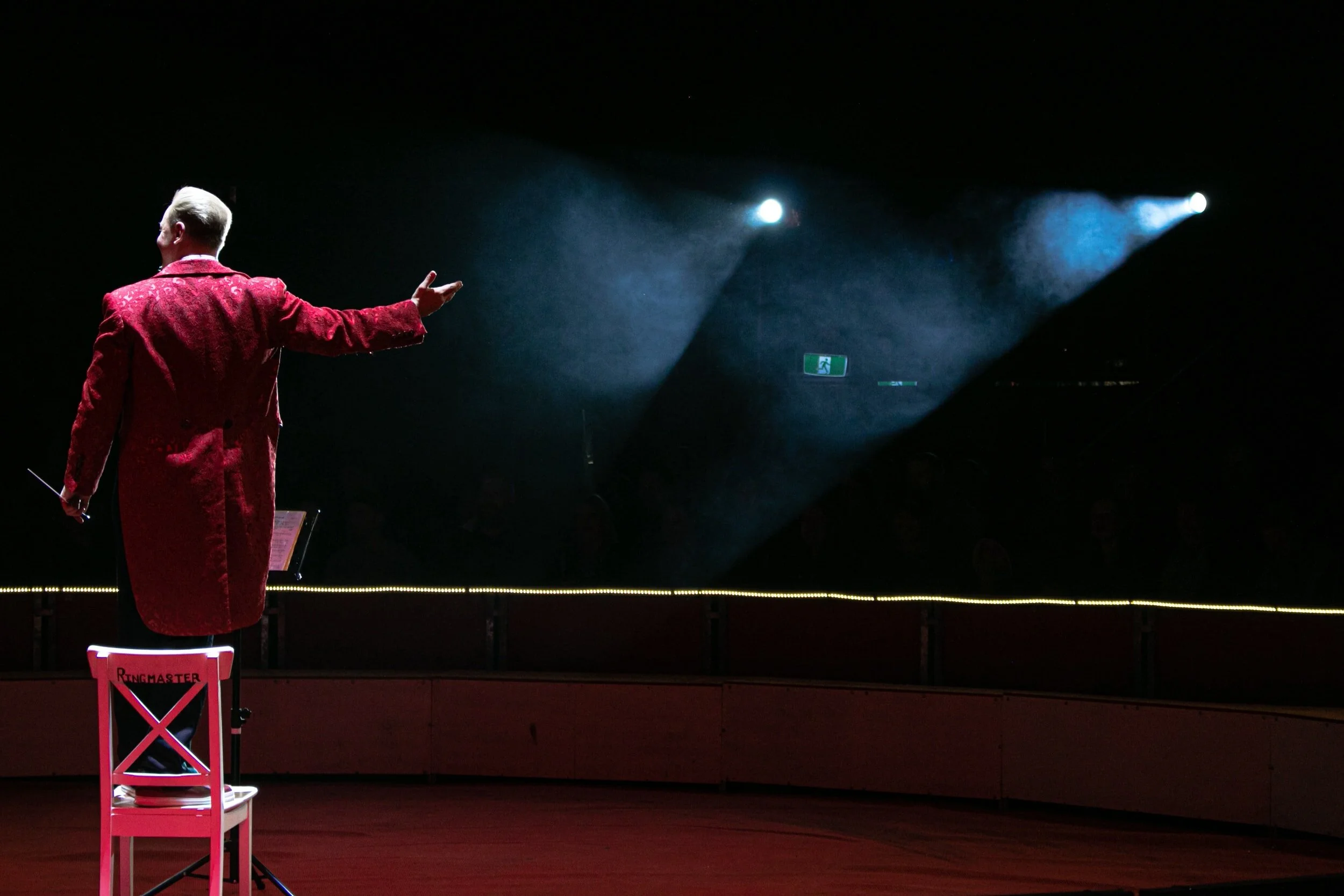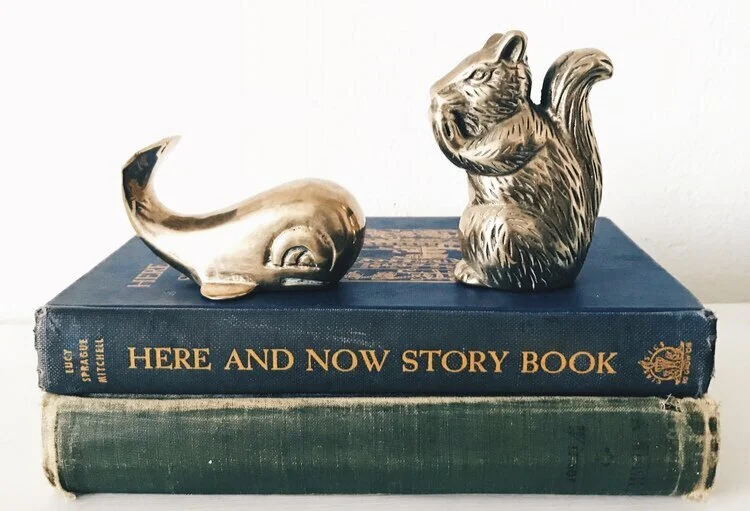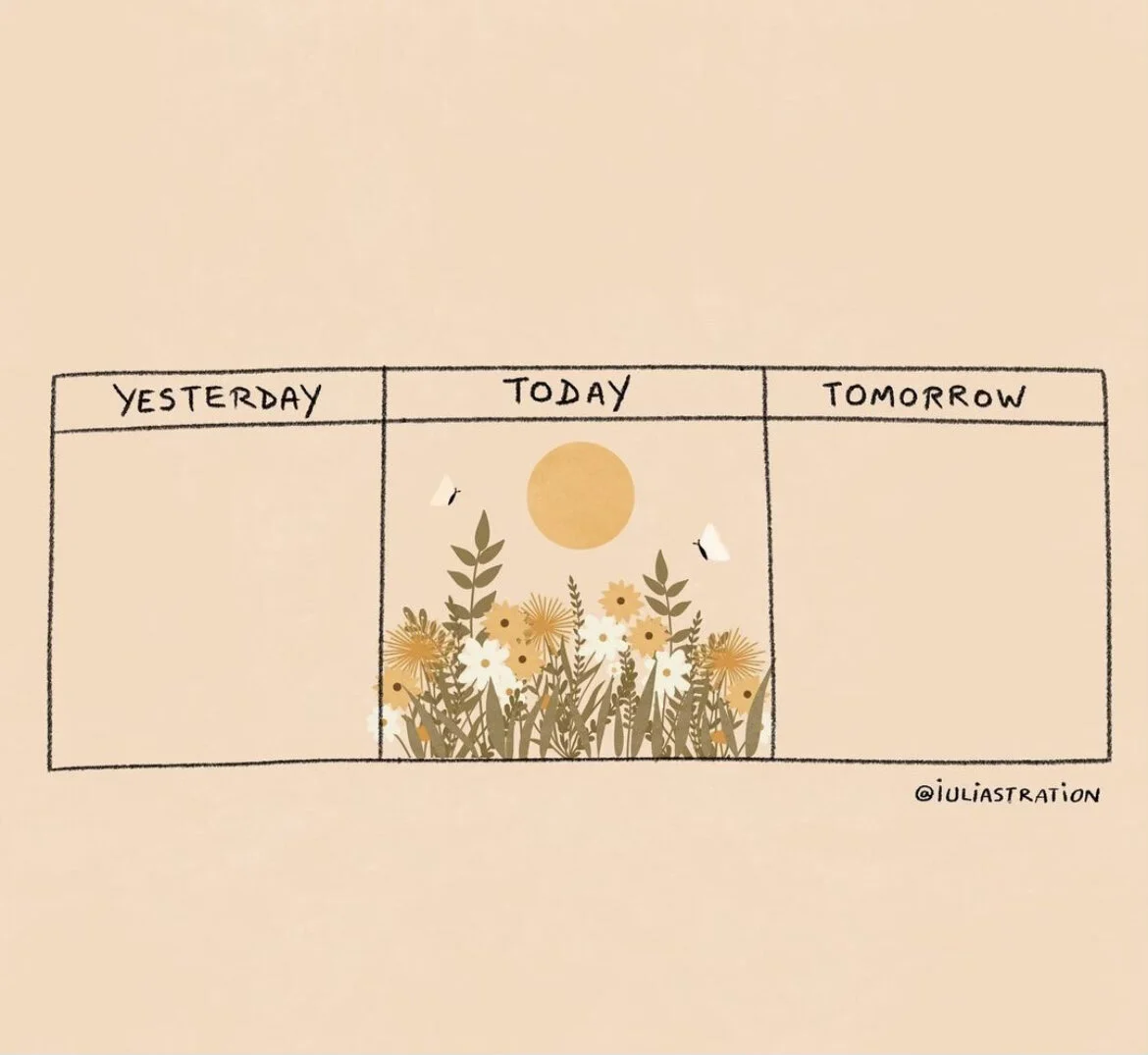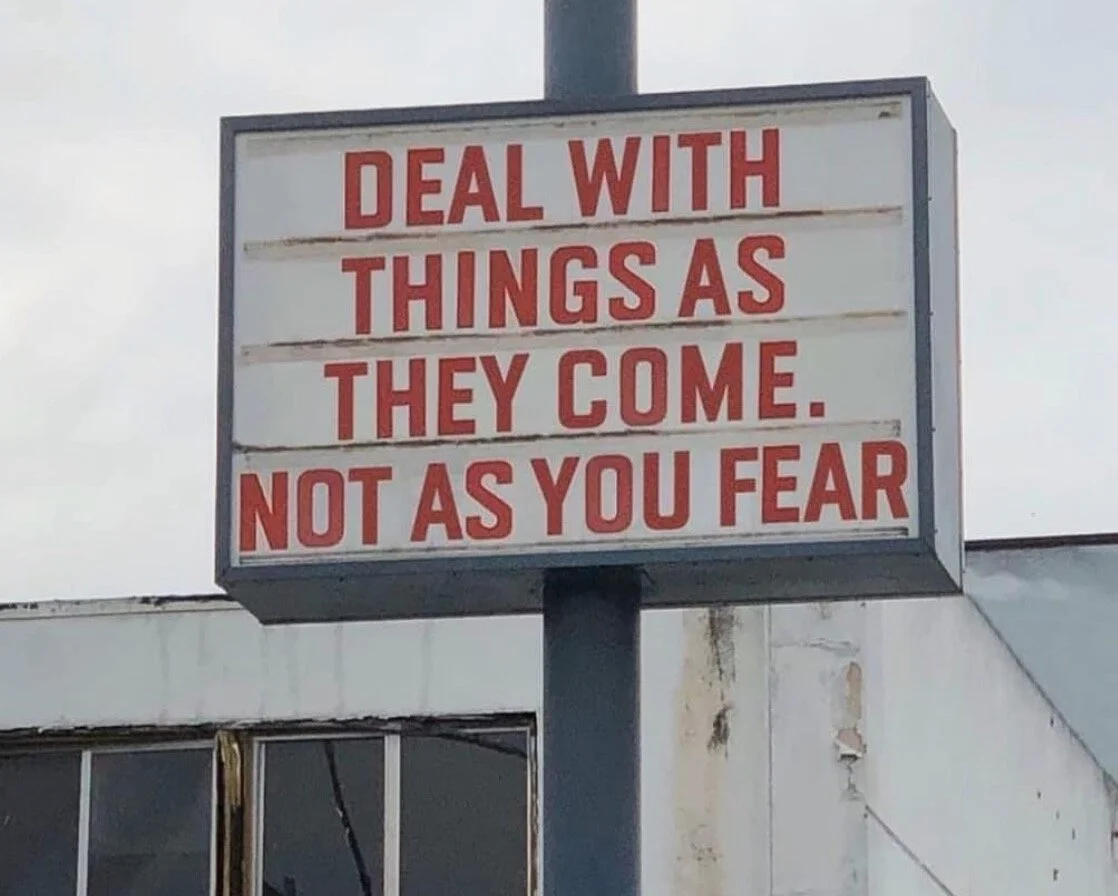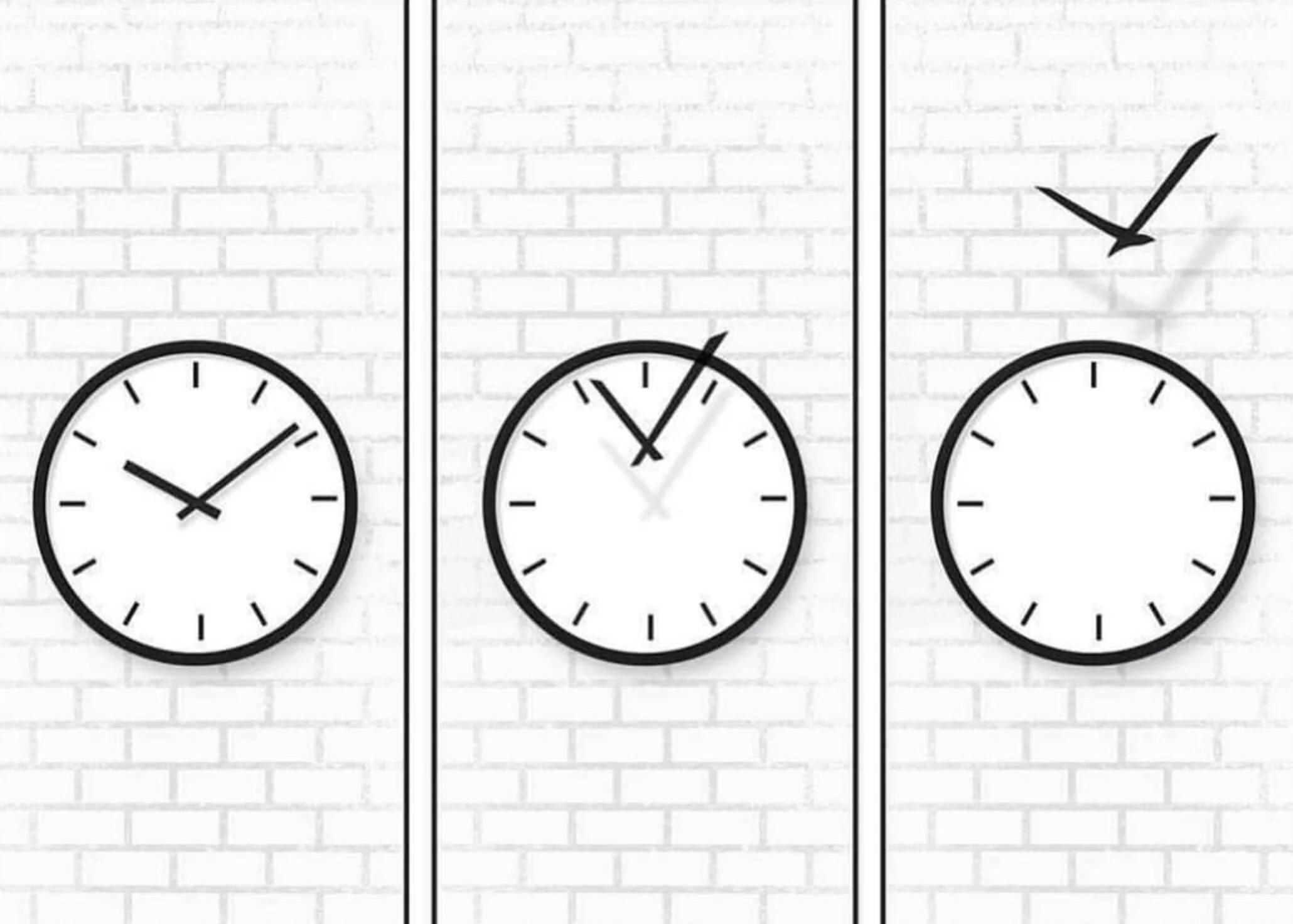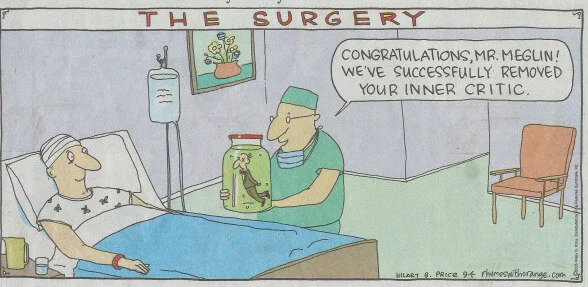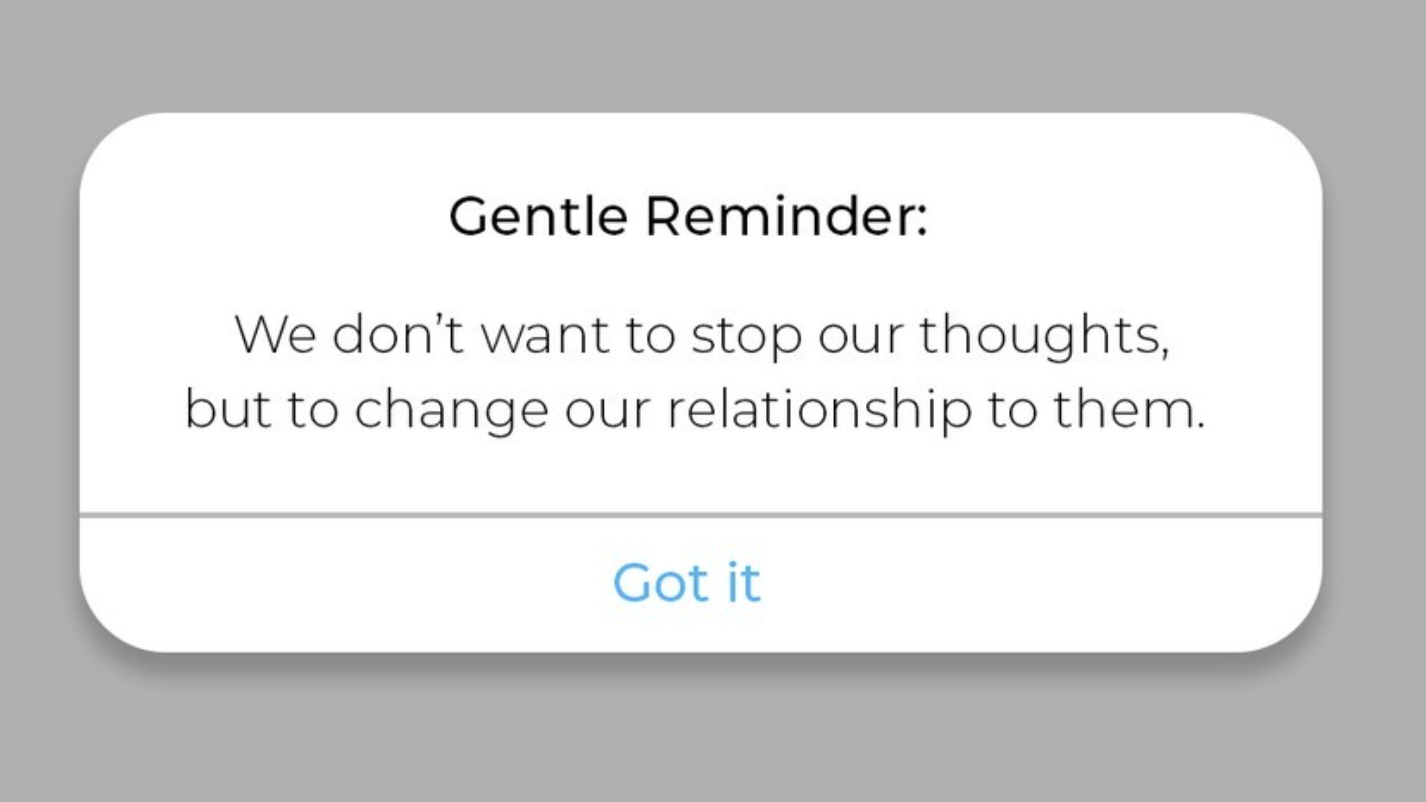
MICRODOSING MINDFULNESS
YOU ARE THE MEDICINE
INTRODUCTION
- Week 1
Wecome to this exploration of the wisdom of mindfulness.
Please feel free to reach out if you have questions or would like extra support
The first zoom presentation.
INTRODUCTION
What is mindfulness?
“Mindfulness offers a pathway for living with more freedom, authenticity and ease. Not by means of resistance, but by means of acceptance. We are cultivating a well-balanced mind that exhibits goodwill and kindness. Mindfulness is a quality that every human being possesses, including you. It’s not something you have to create; you just have to uncover it.”
Setting the stage - An important principle to consider.
Goals vs. intentions in the practice of mindfulness
The practice of the various aspects of mindfulness which we will be learning do not aim to achieve a certain goal, which is perhaps the most paradoxical and difficult aspect of mindfulness to understand.
This may sound very odd.
I’ve found it helpful to understand the difference between intentions and goals as the foundation to develop the proper attitude during practice, which will naturally lead to more effective outcomes for you.
When we make mindfulness a goal, we have, by definition, moved out of the moment. We have created a gap between what we’re experiencing now and what we would like to happen. This inevitably leads to tension—we might begin judging our current experience and say to ourselves… “this stuff doesn’t work” or judge ourselves and say something like “I don't know how to do it or I’m not good at this” if we don’t get instant results.
When we make goals and measure our moments against them, we are already creating a sense of dissatisfaction, because we end up living in a state of constant expectation, which we are often unable to live up too, in our minds.
With an intention, there is no required result—we are simply connecting to what we decide to practice.
“I’m just going to practice, and see what happens.”
Making mindfulness an intention is different. Intentions are found and re-found in the present, so just by making one, you have already accomplished what you set out to do. Well done, you!
An intention cannot fail, because it happens right now. Therefore we invite curiosity and a sense of experimentation:
“Well, this is interesting, I wonder what’s going to happen now?”
Intention has strength, as it’s rooted in reality, but also suppleness—holding to an intention doesn’t mean our actions can’t change, based on what we discover.
Intentions come from inside, whereas goals are external. In connecting to an intention, we don’t have to look elsewhere for satisfaction—what we desire is already here as a seed within us. We may need some guidance and training to cultivate that seed, but relief comes when we realize we don’t need to try and be something we’re not.
When we make mindfulness a goal, however, we turn it into a commodity, the benefits conditional on our having to “get it.” The implication being that we don’t currently have what we need—there is something missing, and we might miss out. This is a recipe for tension.
And our goal ( pun intended) is to relax into our lives, enjoy our own growth, and become friendlier with all of the bumps, bruises and joys of our lives.
Awareness of the present can hardly be called a goal because goals are always related to the future. The problem is that when we start doing the exercises to achieve a certain goal (I am now going to meditate because I want to become calm and relaxed), the goal not only focuses our attention on the future, but also makes us aware during the exercise that we are not achieving the goal fast enough, if at all.
Paradoxically, intentions often make it much easier to become more masterful at mindfulness than having any set goal in mind.
Just practice and do your best. That is enough.
The nuts and bolts of the practice.
Mindfulness is not special. It's ordinary.
It's about facts, not fiction. We already have the capacity to be present. But we can uncover these inherent qualities with simple practices that benefit ourselves, our loved ones, our friends and community, and the places we work at.
You don’t need to become someone else.
You don't have to be who you are not. You don't have to reinvent yourself. Mindfulness recognizes and cultivates your own innate wisdom.
Anyone can do it.
It does not require anyone to change their religious or spiritual beliefs or even have any. Everyone can benefit. It does take intention to practice it, courage and a willing, open heart.
It’s a living practice.
It allows us to increase our awareness and caring into whatever we are doing—and it helps us to soften and relax into life. Even a little practice can improve our wellness and the quality of our lives and relationships.
Life is short. Time is fast. No replay, no rewind. Enjoy every-moment as it comes, as best you can.
MINDFULNESS - AN ECOSYSTEM
Mindfulness can be cultivated through many different types of techniques such as meditation, body scans, paying more attention to ordinary things in our lives. You can eat, walk and work more mindfully. You can also insert mindful pauses into everyday life.
Being mindful can help reduce stress and enhance your performance. Through observing your own mind you will gain insight and greater awareness plus sharpen your attention to others’ well-being.
The philosophical container of mindfulness is the truth of impermanence and the world of opposites.
The principles
WISE ATTENTION
Mindfulness refers to attention that can be directed inside or outside of ourselves. Attention to feelings, body sensations, thoughts, or emotions is mindfulness directed inward.
Attention to a conversation with a friend, walking in a rainforest, or reading a book with deep attention, is mindfulness directed outward.
How to become friendlier with what is happening:)
Attention focuses our awareness on a specific experience. This process can be compared to the operation of a flashlight. Attention is like the light from the flashlight that illuminates a specific area, making it visible to the one who is holding the light. Thus, attention allows us to make things “visible”. In other words, by paying attention, we can become aware of things.
When it comes to attention, two different elements are at play:
The one that requires attention.
The one that regulates attention.
1. External stimuli, such as a leaf blower outside your window, a cute puppy in the park, or a catchy song on the radio, but also internal stimuli such as feelings, emotions, or thoughts may require attention.
For example, when we suddenly hear a loud bang, our attention is automatically directed to this sound. The same is true for internal stimuli. Thus, a worrisome thought can also draw our attention and distract us from what we are doing.
2. Everybody has the will or ability to focus and regulate attention. When a loud bang draws our attention, we can decide to focus on what we were doing before. This process is called attention regulation and is a specific form of self-control. According to some researchers, attention regulation is the most important form of self-control. This is because attention plays a central role in all other forms of self-regulation, such as the regulation of emotions, impulses, and thoughts.
The extent to which we are able to regulate our attention is strongly related to well-being and is a strong predictor of happiness, and correlates to satisfaction in aspects such as social relationships, resistance to bad habits, and academic or business performance.
The good news is that control of attention can be trained, which is what we will do during this exploration. It just takes practice.
The training of attention is essential in mindfulness. Mindfulness teaches us to focus the attention on what is happening in this moment, the now. Although this sounds easy, we often don’t live in the moment and instead, focus our attention on the content of our thoughts, which inevitably lead us to future or past.
Mindfulness regulates attention. Mindfulness exercises are a form of training attention. It’s learning to understand how we are paying attention in any given moment.
Let’s take an example to further clarify:
Say you are driving. You have a meeting to attend and, due to some unexpected road work, there is a huge traffic jam. You begin to feel anxious and start stressing out. You keep thinking “I should have left earlier; I wonder what my colleagues will say. I should have taken a different route.” Your mind moves quickly, interpreting and ascribing many meanings to the situation.
Maybe you start imagining scenarios about how you are going to explain all this, so you don’t look like a fool.
These are natural, automatic thoughts. They simply come uninvited and seem to demand your attention.
What do you do?
Often the tendency is to ruminate in these thoughts, imagine outcomes which may be unpleasant, which leads to stress and frustration towards the situation (traffic jam) and the people involved.
What is described above is a common, natural situation and an equally common set of responses. And none of them are “wrong.”
However, getting carried away with the thoughts is not paying wise attention.
Mindfulness alters this thinking and gives you many moments you can bring your awareness to.
The fact of the matter is all thoughts about your future meeting are a fantasy, because YOU ARE STUCK IN TRAFFIC. That is where you are. Accepting this lessens the suffering that your thoughts are generating.
Hence, it is about using attention wisely. What can you bring your attention to in this moment?
You may choose to:
Allow the thoughts to come and go and just observe them, instead of getting involved in their story and imagining scenarios that are not in the present.
Pay attention to your breath because you are stressed, and notice how the breath simply is in this moment… (shallow, deep, heavy, held, rapid etc.) Then you might choose to do some rhythmic breathing,
Pay attention to your body and notice how it seems to be reacting to the situation. It may feel tight, constricted in places, sweaty, heated and so on. Then you might choose to do a little stretch.
Relax gently back into your seat and notice how the support of the seat feels on your back.
Simply take a look at what is happening in front of you. You may just watch the road works in operation. You might even be happy they are repairing the road:)
Put it all in perspective… it’s not the end of the world. Think about all the people, just like you who are stuck somewhere… and smile.
All of the above are also valid aspects of the situation that can be attended to. In fact, attending to these other aspects can actually lead to a fuller and richer experience of what is really happening. It can also help to deepen your awareness of yourself, of how you feel in such situations and help you connect with your own body and mind. And when you do arrive for your meeting, in all mindful humility you can simply be late, and do whatever is necessary in that moment. The experience does not have to stick to you.
Getting carried away in thoughts, on the other hand does nothing to improve the situation or change it. It intensifies anxiety and uneasiness, and serves no real purpose other than to wish that what is happening to you should not be happening.
That is a hopeless strategy.
THE PRESENT MOMENT
Of all the things that can draw our attention, we pay relatively little attention to the present moment. Rather, our attention is directed towards the past or the future. As we are taking a shower in the morning, we rarely pay attention to showering itself and how lovely it feels. Instead, we focus on the things that need to be done that day or the things that we did the day before.
Mental “tools”, like thinking and planning, are very useful and necessary.
However, they often cause emotional imbalance because we are often not able to stop thinking and planning, even when it is not required!
They are powerful tools that are often difficult to dismiss.
Consequently, we often spend more time thinking about… rather than experiencing our life.
Concerns about the future, regrets about the past, comparing oneself with others, and constantly thinking about how things could be better are examples of typical thoughts. Constant thinking makes it impossible to enjoy a nice meal, a concert, or falling rain. This constant thinking not only distracts our attention from the here and now, but when thoughts are negative, they cause anxiety or stress.
Mindfulness can help us realize that thoughts are not reality.
By focusing our attention on the present moment, we free ourselves from obsessive thinking and connect with our direct experience, rather than a story in our head. Soon we realize that in this moment, right here right now, there is rarely an actual problem:)
Being able to connect with the present moment has clear benefits. Mindful people are happier people because they spend a lot less time arguing with reality.
It sounds deceptively simple, but how many times is your attention redirected by your thoughts? Although thinking is handy as it allows us to make plans and solve problems, it often triggers as many problems as it solves.
Your mind can get lost in endless thinking (worrying and rumination). Sound familiar?
We lie awake at night because we worry about what might happen tomorrow. We cannot stop thinking about that mistake we made last week. In our mind, we are constantly busy with things that need to be completed. These are only a few examples of how our mind can make life difficult.
“Mindfulness teaches us to deal with these problematic thoughts by focusing our attention on the here and now, so we can learn to create a friendlier relationship with our thoughts, feelings, and emotions.”
For example, when we judge a certain emotion (I am fearful - this is bad - I don’t want to feel this way) this automatically creates a conflict between your current feeling (fear is negative and why can’t I feel better?) and the expected or ideal feeling (I want to feel good or positive).
Any attempts to resolve this conflict by force, for instance by suppressing a negative feeling, requires a lot of energy and paradoxically can cause us to feel even worse.
The mindful practice in this situation is to simply pause, breath and observe the story your mind is serving, which allows you to make better choices on how to react.
Just practice turning the volume down on your thinking.
OPEN AWARENESS ( put the label gun down )
We are used to judging everything and everyone around us. We compare present experiences with past experiences or we live in endless expectations about exactly how our future should unfold, and make judgments if it doesn’t show up the way we planned. We experience something often say…
I am stressed or
I am sad, or
I am mad.
But are you?
You are not the feeling or emotions; you are having an experience of them in your awareness, and you can mindfully encourage yourself to keep your awareness open to the emotion, without having to serve it a 5 course meal, and turn it into a story and hold onto to it.
A mindful approach is to say you feel stressed or feel sad. And like clouds in the sky, all emotions come and go.
In the information age, instant judgments are built into daily life. Instant like and dislikes of everything. This process of judgment prevents us from being present in the here and now. We see the present through the lens of our endless judgments, which are a form of resistance.
Just begin to notice when your mind pulls out the label gun and your awareness starts to hold on too tight.
Direct your attention in a compassionate way back to the practice of not needing to label the moment your in, but just to experience it.
Remember the analogy, your hand is your awareness and the unwanted feeling or emotions, born out of our judging mind, are the pink candy. You want to keep your hand open and aware - you are not the feeling, you are having an experience of the feeling.
ACCEPTANCE
Acceptance plays a key role in mindfulness. Instead of fighting against feelings or thoughts, mindfulness fosters willingness to acknowledge, allow, and accept these internal states. We don’t suppress them.
They are there anyway:)
By letting go of this struggle, we save energy and realize the things we fight against often fade away automatically, sooner than when we resist them. Resistance is like quicksand.
As soon as we acknowledge emotions, we can experience them as a temporary state; in other words, the emotion comes and goes like clouds in the sky.
In this way, you becomes an observer of your own inner state. One is no longer completely lost in thought, but an observer of their thoughts.
This observer can still experience emotions or feelings but can now also choose how to react to them. In addition, we learn that not everything we think is true. Mindfulness can help us identify less with repetitive thoughts and emotions.
Acceptance starts with the desire to live with less resistance.
In general, people are often never happy with the way things are. We devote much time and energy to denying what is actually happening to us.
Consequently, we waste precious moments by resisting something that cannot be changed in the first place.
During practice, both pleasant and unpleasant sensations may arise, along with diverse emotions and thoughts. Instead of denying them and pushing them away, mindfulness requires willingness to acknowledge what is happening for you.
NO IDENTIFICATION OR DE-PERSONALIZE
Mindfulness cultivates a friendly, acceptance-based relationship with our thoughts, feelings and emotions.
In other words, when unpleasant states arise, try to welcome them and perceive them as part of the human experience.
The goal of mindfulness is not to get rid of these emotional states but to change one’s relationship with them.
You are not the emotion/thought
I experience sadness vs I am sad
Not everything you think is true
States (emotions/thoughts) come and go
“Live each moment completely and the future will take care of itself. Fully enjoy the wonder and beauty of each instant. Practice the presence of peace. The more you do that, the more you will feel the presence of that power in your life.”
CHOICE - FINDING THE RIGHT BALANCE
Mindfulness may give the impression that it means living in the present moment only, without thoughts about the future or past or without automatic patterns of thinking. This could not be further from the truth.
Mindfulness is about balance and choice.
For instance, there is nothing wrong with goal setting. Goals can provide direction, motivation, and meaning to achieve a future state. However, problems occur when the balance between goals (future desired state) and the present moment (things we do in the present to achieve a desired future goal) is lost.
In this case, it is possible that we are so focused on reaching our goals, that we forget to live in the present moment, which is all we ever have, so we end up living with too much tension.
Finish Line or outcome thinking.
Our life can become a sequence of goals, with our mind constantly living in the future and preventing us from enjoying the present. This can easily lead to frustration, especially when we notice that we fail to reach our goals in the anticipated time span. In some cases, we even fail to reach our goal because of our obsessive focus on the goal.
Mindfulness helps us become aware that we can learn to enjoy the process and the journey, and not just focus on finish lines. By focusing our attention on the present moment, we often become more efficient and effective in terms of goal achievement.
AUTO-PILOT LIVING
The same principle of balance applies to automatic behavior. In some cases, automatic patterns of behavior are very helpful.
Driving a car is an example of helpful automatic patterns. However, in some cases, automatic patterns can cause unwanted behaviour, like responding aggressively when you receive a criticism or automatically starting to worry when we judge or label something as negative.
In these cases, mindfulness can help us become more aware of these automatic patterns and change them in order to create more balance between helpful and less helpful patterns.
PATIENCE
Perhaps most importantly, be gentle and kind with yourself. The effects of your mindfulness practice will not always be immediately evident.
It is like gardening.
You need to prepare the soil, plant the seeds, water them, and patiently wait for your garden to grow.
The foundation is equally as important as each stage of the process. Therefore, take your time to do the homework and just do it to the best of your ability.
COMPASSION
You may notice yourself feeling frustrated when you inevitably get distracted during the exercises. Thoughts and feelings will always arise. Every mind operates like this. Your mind is no exception. Awareness in this moment gives you an opportunity to direct your attention back to whatever you are doing.
Thus, be kind to yourself when you notice pain, anger or fear. Be kind when you notice that you make judgments and get distracted and when your mind wants to avoid pain. Practice friendly, open awareness. Mindfulness is about starting over, again and again.
I call it forgetting, forgetting, forgetting, remembering.
In this way, you train the re-direction of attention, just gently bringing the mind back to the present again and again. Mindfulness cultivates the beginner’s mind.
It allows us to look at reality like a beginner, who experiences something for the very first time.
LETTING GO
Sometimes, positive experiences arise during the exercises. People often want to hold on to these experiences. We attempt to prolong their duration and make them last longer. Open awareness means not trying to hold on too tightly. In fact, trying to cling to positive experiences is the same thing as pushing away the negative ones.
In both cases, we try to alter reality instead of experiencing it with an open attitude. It is enough to observe and give the positive experience room to follow its natural course.
The more freedom you allow for experiences to occur, the more freedom you will experience.
MEDITATION
Meditation is a process for knowing, shaping, and liberating the mind.
In the same way that cardio or weight-training helps you cultivate a healthy, strong, and flexible body, meditation practice helps you cultivate a healthy, stable and flexible mind.
It also gives you access to a subtle level of awareness (your own inner wisdom), from which you’re able to perceive reality directly and with great clarity. So, for instance, imagine two identical and beautiful diamonds, sitting side by side in the bright sunlight. One shimmers and glistens in the light, and one is covered in mud, and does not shine at all.
Still, both are diamonds, but one does not reflect light. The mud just needs to be washed off. Meditation practice is washing the mud off the diamond, so it can reflect its beauty. The diamond is your true self. It’s inside you, but, often obscured by mental and emotional habits (mud).
When we meditate it doesn’t help to fixate on the benefits, but rather to just do the practice.
The benefits will reveal themselves in time.
I will be introducing you to a meditation technique in the next class.
WHAT'S REQUIRED IN THIS COURSE?
This exploration requires about 15 to 30 minutes a day. I encourage you to commit to that for duration, but as always, do your best with the time you do have.
I recommend having a journal to record thoughts, ideas and inspirations during your 5 weeks.
You may also wish to take notes during the presentations.
These exercises can be enjoyable and rewarding - providing you with practical opportunities to link the insights obtained from the weekly sessions into your daily life.
Mindfulness is not something you can practice tomorrow.
SOME THOUGHTS ON PRACTICE
It’s helpful if you can determine a trigger that helps drive automatic behaviour to get you to your practice.
Set out for your week ahead when you will do your practice.
For example, set a time on your phone to practice the stop method… you might set a few alarms on your phone to remind you to stop and practice throughout the day.
Pick a time and place before starting your day for a few minutes of sitting quietly and doing some concious breathing… and in the evening.
PRACTICES.
1. STOP PRACTICE
Try to do the STOP PRACTICE throughout your day, if you can do 3 or 4 times each day. The more repetitions, the greater the effect. However, if you cannot do it that often, try to practice as often as possible. You can use the guided meditation below to support you, but you can also try doing it on your own.
INSTRUCTIONS
The STOP practice can help whenever you’re feeling distress, creating space to observe and calm your emotions, and to access the deeper resources within you. It helps you develop the emotional intelligence and psychological flexibility required for greater mastery over challenging moments life throws at you.
You might want to schedule this into your calendar or phone for a couple times a day and practice it even when you’re not stressed to get the feel for it, so you can better remember to access it when things get a little crazy or stressful.
S – Stop what you are doing, put things down for a minute.
T – Take a breath. Breathe normally and naturally and follow your breath coming in and of your nose. You can even say to yourself “in” as you’re breathing in and “out” as you’re breathing out if that helps with concentration.
O – Observe your thoughts, feelings, and emotions. You can reflect about what is on your mind and also notice that thoughts are not facts and they are not permanent. If the thought arises that you are inadequate, just notice the thought, let it be, and continue on. Notice any emotions that are there and just name them. Research suggests that just naming your emotions can have a calming effect. Then notice your body. Are you standing or sitting? How is your posture? Any aches and pains?
P – Proceed with something that will support you in the moment. Whether that is talking to a friend or just rubbing your shoulders, having a cool glass of water, or petting the dog. Whatever would support you in that moment.
The S.T.O.P. guided meditation (you can listen or download)
A guided overview
2. ROUTINE ACTIVITIES
Choose one (or more) routine activities, such as brushing your teeth, doing the dishes, or vacuuming and try to do the activity with full mindful attention. In other words, try to focus on the act just without thinking about anything else. During the next week, choose routine activities on which you will consciously focus your attention.
Pay attention to daily tasks. You can choose to be curious about all the things you do during the day, paying attention with gentle interest. You can taste the toothpaste as you brush your teeth and feel the texture of the toothbrush on your gums. You can feel the warm water on your skin as you wash the dishes. You can get a sense of your bodily sensations, thoughts and moods as they change throughout the day.
Use cues as reminders. Often, the hardest part of being mindful is remembering to experience things with fresh eyes. It can be helpful to renew your intention often, perhaps ‘piggybacking’ your reminders on to ordinary activities, for example, every time a notification arrives on your phone, or every time you wash your hands, or every time you cross through a doorway.
Be prepared for it to be challenging. Sometimes, you might not like what you observe. This is not a mistake but the reality of our lives. Mindfulness doesn’t increase challenging thoughts, moods or physical pain, but you might notice some distress as you become more attentive to your experience. If this happens, it’s helpful to bring a little lightness and humour when you try again. If it is overwhelming, you can always choose to move away or to stop the practice, perhaps returning when you feel more resilient. In time, you can come to understand these experiences are normal and nothing to be fearful of. You can start intentionally choosing what you do and don’t attend to.
These informal practices give you the chance to practise paying attention in a particular way without the extra burden of ‘finding time to be mindful’. Mindfulness does not require extra time.
3. APPLY WISDOM IN DAILY LIFE:
Attention Rescue : RAIN
4. Conscious Breathing
You can use this breathing video to practice this very calming breath.
5. Additional Resources
The Zen Master Thich Nhat Hanh on some key points of the mindfulness.
Health care professionals face profound challenges every day at work.
Mindfulness can support them in practical ways to live and work with a greater sense of ease. Mindfulness helps to develop a way of thinking and being that supports our personal and professional life.
Mindfulness has profound benefits for those working in health care - a profession that invites us into a relationship with those who are experiencing pain and suffering.
How do we care for ourselves and others in the most effective way? How do we keep our hearts open in moments that make us want to shut down?



